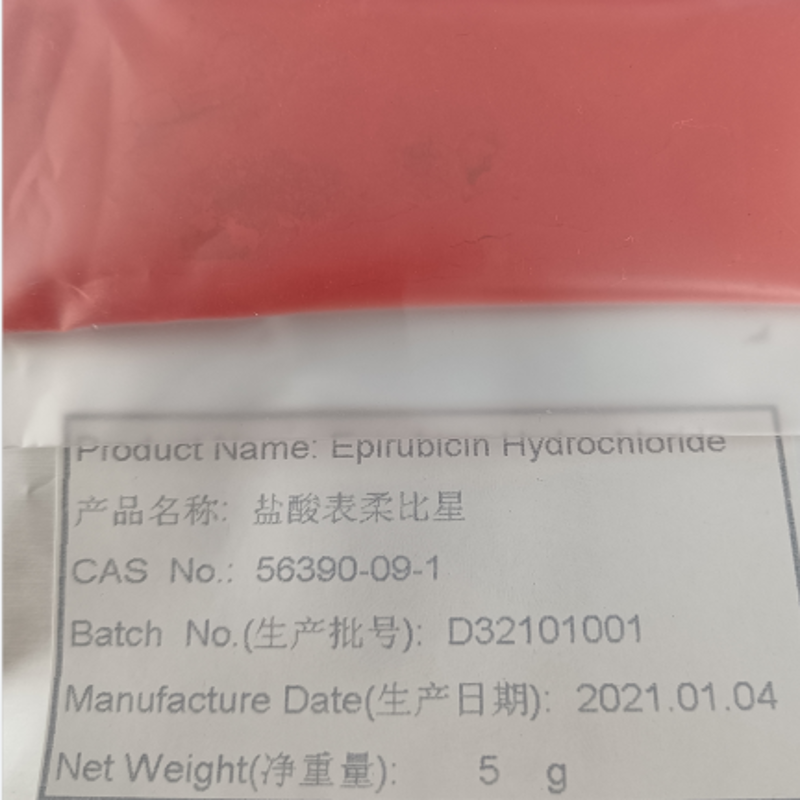-
Categories
-
Pharmaceutical Intermediates
-
Active Pharmaceutical Ingredients
-
Food Additives
- Industrial Coatings
- Agrochemicals
- Dyes and Pigments
- Surfactant
- Flavors and Fragrances
- Chemical Reagents
- Catalyst and Auxiliary
- Natural Products
- Inorganic Chemistry
-
Organic Chemistry
-
Biochemical Engineering
- Analytical Chemistry
-
Cosmetic Ingredient
- Water Treatment Chemical
-
Pharmaceutical Intermediates
Promotion
ECHEMI Mall
Wholesale
Weekly Price
Exhibition
News
-
Trade Service
Ovarian cancer is a malignant tumor derived from the ovary skin, according to the pathogenesis and tissue origin, can be divided into type I and type II ovarian cancer, type I ovarian cancer growth is slow, mostly early in diagnosis, better prognosis;
non-invasive precision identification of type I and type II before surgery helps ovarian cancer patients choose future treatment options and improve prognostics.
because of the complex morphology of type I and type II ovarian cancer, its clinical characteristics have a high similarity, only by the clinician's naked eye identification, subjectivity is strong, low diagnostic accuracy.
In recent years, imaging histology based on quantitative image analysis and artificial intelligence technology has developed rapidly, and its ability to establish the link between tumor image and tumor tissue pathology has been widely used in preoperative non-invasive assessment of tumors, which provides a new way of thinking for precise non-invasive identification of type I and type II ovarian cancer.
Recently, Gao Xin team of Suzhou Institute of Biomedical Engineering Technology of Chinese Academy of Sciences, in collaboration with Qiang Jinwei team of Jinshan Hospital affiliated with Fudan University, jointly carried out the first large sample study of ovarian cancer based on MRI imaging histology, based on the non-invasive identification machine learning model of type I and type II ovarian cancer, and used visualization technology to identify key areas for the first time in imaging.
the study included 294 patients with ovarian cancer (including 143 patients with type I and 151 cases of type II) and collected multi-parameter MRI image data (including four imaging sequences of T2WI-FS, DWI, ADC, and CE-TIWI).
team extracted high-volume imaging features from patient tumor areas, screened features and modeled them using imaging histology methods, and the results showed that the imaging histological models built by the team were able to identify type I and TYPE II ovarian cancer with an average accuracy of 83% (Figure 1).
Given that CE-T1WI scanning requires injections of contrast agents and some patients are allergic to contrast agents, the team built a lightweight model using only three sequences, T2WI-FS, DWI and ADC, with an average accuracy of 81% and no significant decrease in diagnostic performance, indicating that patients do not need to have CE-T1WI scans if clinical examination is not necessary.
visualization showed that the key areas for identifying patients with type I and TYPE II ovarian cancer were located in tissue loose areas or at the junction of reality and cysticity (Figure 2), and the findings are expected to assist in the positioning of frozen pathological slices in surgery, thereby reducing sampling errors.
the study, on the basis of the identification of good malignant tumors in the early stages, realized the subtype differentiation of ovarian malignant tumors and promoted the process of automatic diagnosis of ovarian tumors.
research has been funded by the National Natural Science Foundation of China and others, and the results of the research are published in European Radiology under the title MR image-base radiomics to Ι and type ΙΙ epithelial ovarian cancers.
Shuming of Suzhou Medical Institute and Li Yongyi of Jinshan Hospital, affiliated with Fudan University, are the first authors.
1. ROC graph of the model 2. Masking test results.
The original T2WI image of the first behavior; the tumor area corresponding to the second behavior, where the yellow lines depict the entire tumor area, while the red lines depict the liquid area (including the cystic and necrotic areas); the third behavior masks the overlay of the test heat map with the original T2WI image; and the fourth behavior masks the test heat map.
(a) is listed as an image of type I ovarian cancer, with the key areas as tissue loose areas, and (b) as type II ovarian cancer, with the key areas as the junction area between real and cystic.
.







